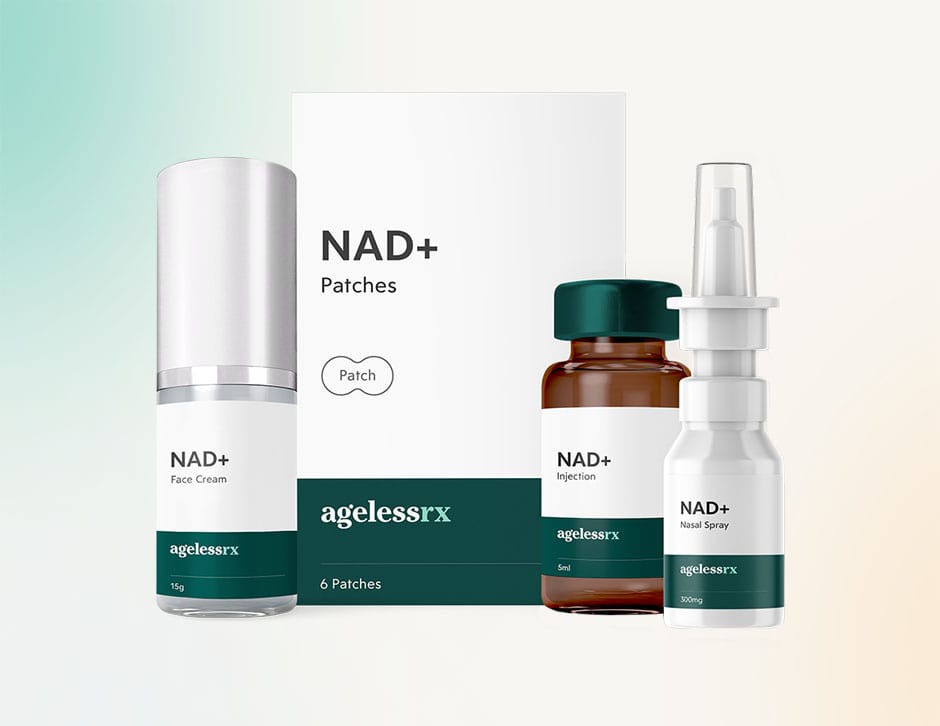
From the Desk of Dr. Z: AgelessRx Co-founder and former Chief Medical Officer, Dr. Sajad Zalzala offers his insightful perspective on topics related to longevity. With a wealth of experience and a deep-seated passion for disease prevention and extending healthy lifespans, Dr. Z is dedicated to sharing his knowledge on the secrets to longevity. Today, he shares his knowledge on what is NAD+ and NADH.
As you read, keep in mind the following three points:
- NAD refers to both NAD+ and NADH
- NAD is important in energy production and powers your longevity genes
- NAD levels naturally decrease as you age—but there are resources to help!
If you recall the Krebs cycle from high school science class, you may remember one of its key components: NAD. What you may have missed (especially if it has been some time since high school) is the importance of NAD as we age. In fact, many do not realize the importance of NAD until much later in life.
But there are simple methods available to boost our NAD+ levels. Whether you boost NAD+ directly with pure NAD+ or supplement with NAD+ precursors, you can easily maintain your NAD+ levels as you age.
What Is NAD+
NAD stands for nicotinamide adenine dinucleotide and is often referred to as NAD or NAD+. Simply stated, NAD is a vital coenzyme naturally produced by the body and found in every single cell. NAD+ is involved in hundreds of metabolic processes—the most important of which is cellular repair. NAD levels decline with age, as well as when the body undergoes metabolic stress, such as upon exposure to a virus.
Specifically, NAD comes in two forms: NAD+ and NADH. These two forms are chemically very similar, but they are not exactly the same. Sometimes, NAD Plus or NAD+ is referred to as just NAD (as above) but that plus sign is important as NAD refers to the two forms as a collective.
Here, we outline distinctions between NAD+ and NADH, and explain how they work together in our bodies.

What Does NAD+ Do?
NAD has two general sets of reactions in the human body. First, NAD+ helps to convert the nutrients we ingest into energy, which is then utilized in cellular metabolism. Secondly, NAD works as a molecule to help proteins regulate other cellular functions.
What Is NADH?
The NADH definition is as follows: nicotinamide adenine dinucleotide (NAD) + hydrogen (H)
How does this compare to NAD+? Simply put, NAD+ and NADH exist as what is termed a “redox couple.” NAD+ is the oxidized version and NADH is the reduced version.
NAD+ and NADH
In the body, NAD+ and NADH do different things. In medicine, the debate continues: Is the NAD+ to NADH ratio crucial, or should we prioritize NAD+ quantity?
Our bodies have a limited supply of NAD+ that dwindles with age. As stated, NAD+ is fundamental for many biological processes. NAD+ is also necessary for sirtuins—a group of proteins—to ensure our metabolism stays healthy and cells produce energy.
The ratio of NAD+ to NADH decides whether our cells can effectively produce ATP or adenosine triphosphate. ATP is the “energy currency” of the cell. When NAD+ is converted—or reduced—to NADH, ATP is created. This occurs in both the glycolysis and infamous Krebs cycles.
At the same time, NADH is oxidized within the electron transport chain to NAD+. As NADH loses its H+ electron, that H+ fuels the mitochondria of the cell, creating more ATP. While all three processes—glycolysis, the Kreb’s cycle, and the electron transport chain—create ATP, the majority of ATP is created in the electron transport chain.
Because of how the NAD+ and NADH molecules are utilized within these cycles in the body, our ratio is pushed into decline because NADH increases! Eventually, we develop an imbalance in our NAD+ to NADH ratio. This affects how well our cells can utilize the NAD+ we have left.
As more research is completed, the importance of keeping the NAD+ to NADH ratio in balance will become clearer—for now, we know that increasing NAD+ is incredibly important for slowing aging and age-related diseases.
Stay tuned!
Dr. Z
